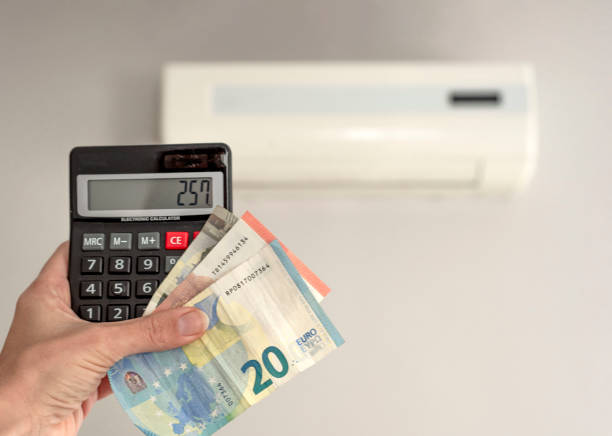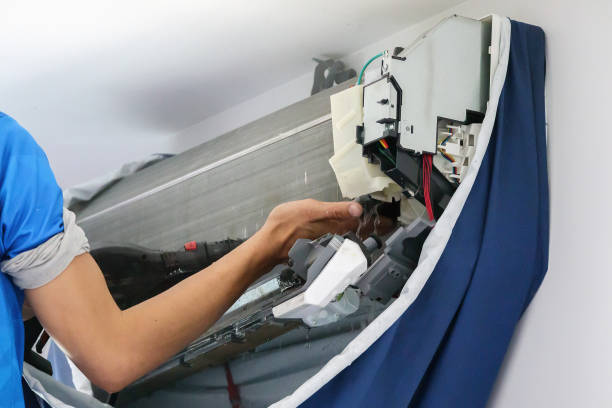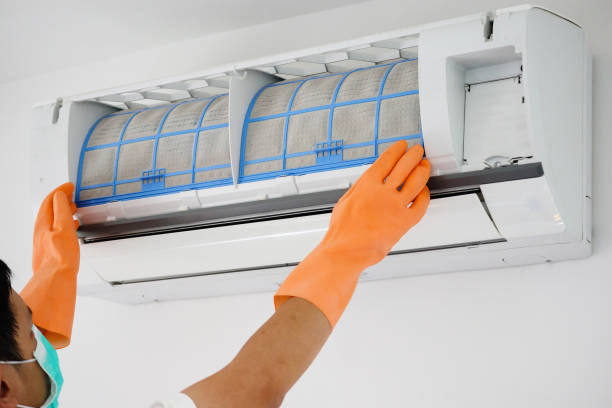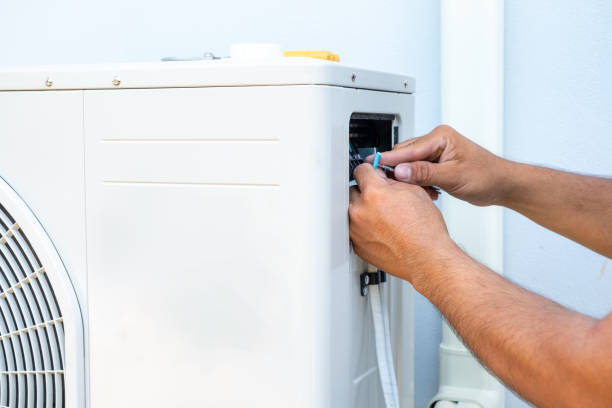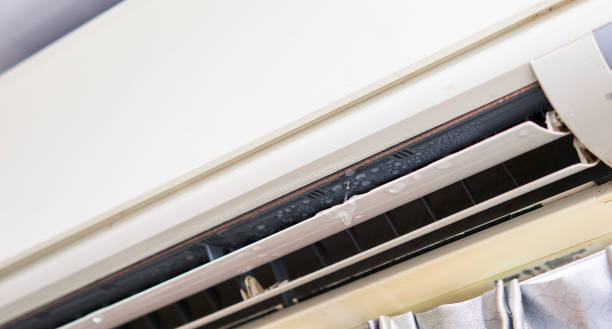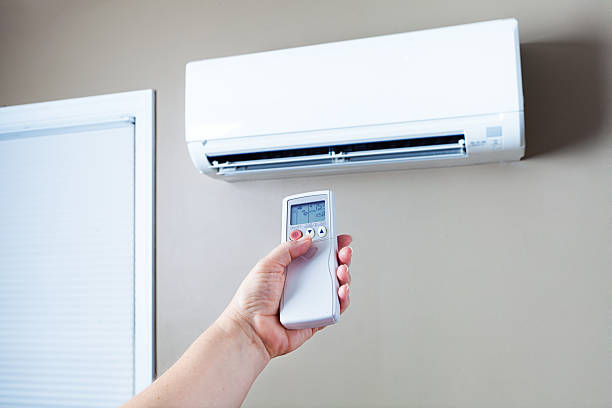You’re not alone. Homeowners everywhere encounter this frustrating problem, especially in hot weather. After a blackout or power surge, the air conditioner might not work or may blow warm air instead of cool air. In this guide, what may have gone wrong will be explained, along with step-by-step instructions to troubleshoot an AC that isn’t cooling. An air conditioning company based out of South Bay, South Bay AC Pro has helped hundreds of local homeowners restore cooling fast. Here’s what to do after an outage involving power interruptions, if your AC is not working.
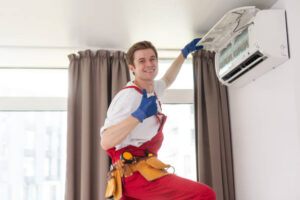
Why Is Your Home AC Not Cooling After a Power Outage?
Your AC system might go haywire after a power outage or when it comes back on. In most cases, the AC does not blow cold air, does not turn on, or the thermostat does not respond due to some other issues. The sudden surge or outage can trip circuit breakers, blow fuses, or damage electrical parts like capacitors.
Common Electrical Issues That Can Occur
- Tripped circuit breakers
- Blown fuses
- Fried capacitors or control boards
- Thermostat malfunctions
Understanding these issues can help you troubleshoot effectively.
Check the Circuit Breaker First
If your AC won’t turn on, the first step is to check the breaker box. Look for the switch labeled “AC” or “cooling.” If it’s in the middle or OFF position, flip it completely OFF and then ON again. This may restore power to your unit if the breaker tripped during the outage.
How to Tell If Your Breaker Tripped
If the switch is not fully in the ON position, you may need to reset it by flipping it OFF and then ON again. You might also hear a click when resetting, which is normal. If multiple appliances stopped working, it could indicate a broader electrical issue. If the breaker trips again quickly, it’s best to call an HVAC technician to inspect for underlying problems.
Reset Your AC Unit
Sometimes your air conditioner simply needs a reset. Start by turning the thermostat OFF. Then switch OFF the breaker connected to your AC. Wait five minutes before switching the breaker back ON. Turn your thermostat back to COOL and set your desired temperature.
When a Reset Might Not Work
- If the thermostat screen stays blank
- If the outdoor unit doesn’t activate
- If the air doesn’t blow indoors after the reset
In these cases, deeper issues may be present.
Check Thermostat Settings After Power Loss
After a power outage, your thermostat may reset itself. Make sure it’s set to COOL, and that the temperature is lower than the current room temperature. If the screen is blank, check the batteries or power source.
Signs Your Thermostat Needs Attention
A blank display, incorrect time or date, or settings that have changed to HEAT or OFF are common thermostat issues after a power outage. Replacing the batteries or reprogramming the thermostat is often enough to get your AC working again.
Inspect the Outdoor and Indoor Units
Take a look at the outdoor unit. If the fan isn’t spinning or it’s completely silent, there may be a blown fuse, a failed capacitor, or a damaged contactor. If the indoor unit isn’t blowing air, the blower motor or its power supply might be the problem.
Visual and Audible Clues
- Humming noise from the outdoor unit
- Ice forming on the indoor coils
- No air movement through vents
Each clue points to a different potential problem area.
Look for Warning Signs
Watch for things like blinking lights on the thermostat, fans that don’t work, strange noises, or a burnt smell. These are signs of deeper electrical problems, such as compressor issues, frozen coils, or refrigerant leaks.
Red Flags You Shouldn’t Ignore
- Burning smell
- Buzzing from the compressor
- Ice buildup on refrigerant lines
These warning signs usually require professional help.
Simple DIY AC Fixes You Can Try
Before calling for help, try a few do-it-yourself steps. Change the thermostat batteries, check for dirty air filters, and make sure all vents are open. You can also thaw frozen coils by turning off the system for a few hours.
Easy Fixes That Often Work
Replacing clogged air filters, unblocking return air vents, and manually resetting the thermostat are simple tasks that can often restore your AC’s cooling performance. These quick fixes are easy to try before calling in a professional and may resolve the issue without much effort.
What If It Still Doesn’t Work?
If none of the basic troubleshooting steps work, your AC may have suffered damage from the power surge. Components like capacitors, contactors, or the thermostat control board may be damaged or fried. Even the AC compressor itself might be affected.
Parts That Often Fail After a Surge
- Dual run capacitors
- Contactor switches
- Control boards
- Blower motors
Testing and replacing these parts usually requires a technician.
When to Call an HVAC Professional
If the breaker keeps tripping, the outdoor unit hums but doesn’t start, or the compressor won’t kick on, it’s time to bring in a licensed HVAC technician. You should also call if you suspect a refrigerant leak, capacitor failure, or any other complex electrical issue.
What a Technician Will Check
- Voltage to and from your AC
- The compressor and capacitor function
- Refrigerant levels
- System diagnostics
At South Bay AC Pro, we bring the tools and experience to fix these issues fast.
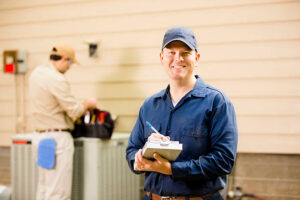
Preventing Future AC Problems During Power Outages
Power outages can’t always be avoided, but you can protect your AC system. Installing a surge protector is one of the best ways to prevent damage. Consider upgrading to a smart thermostat with battery backup and schedule regular HVAC maintenance.
Proactive Measures That Help
Installing whole-home surge protectors can shield your AC system from electrical damage during outages. Upgrading to smart thermostats with memory backup ensures your settings stay intact even if the power goes out. Scheduling bi-annual HVAC maintenance helps catch small problems before they become big ones. Lastly, replacing aging components before they fail can prevent unexpected breakdowns. Together, these preventive steps can save you both stress and costly repairs in the long run.
Conclusion
If your home AC isn’t cooling after a power outage, don’t panic—many issues can be solved with a few simple checks. From resetting the breaker to inspecting your thermostat and AC units, these steps can help restore comfort fast. Still not working? It’s time to call the experts. Contact South Bay AC Pro today for fast, reliable service and professional repairs. We’ll get your system running smoothly so you can stay cool, no matter the weather.
FAQs
Why is there no cold air from my AC after the power interruption?
An interruption in the current may have caused a circuit breaker to trip, caused the thermostat to reset, or may even have caused electrical damage. Start by resetting the breaker and checking the settings.
Is my AC a casualty of the latest power outage?
Yes. Power surges can render viruses of capacitor, fuse action, or compressor running.
How may I reset an air conditioning unit after a power failure?
Switch OFF the thermostat first; cut the power from the breaker for five minutes, switch it ON, and set the thermostat to COOL.

